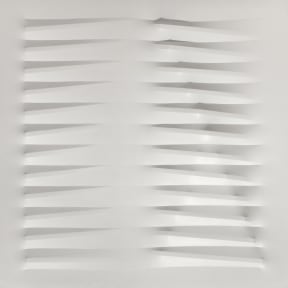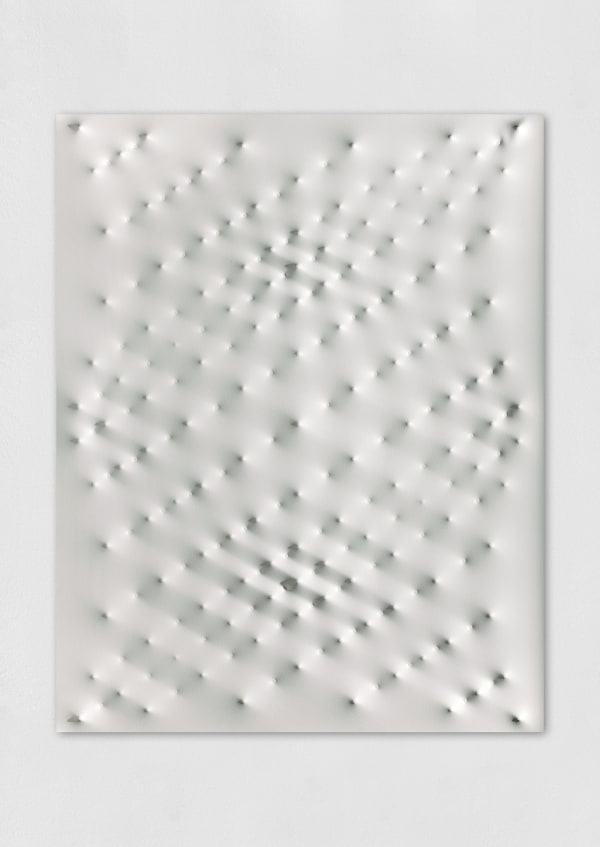-
BiographyEnrico Castellani (Castelmassa, Italy 1930 - Celleno, Italy 2017)
Born in Castelmassa, in the province of Rovigo, in 1930. Castellani originally studied in Novara and Milan, before moving to Brussels in 1952 to study art and architecture at the Royal Academy of Fine Arts and the National School of Architecture and Fine Arts in Cambre.
In 1956, he moved to Milan, where he began rethinking the conventional way of making art, blurring the boundaries between painting, sculpture and architecture.
In 1959, he had an intuition which became a fundamental aspect of his art: he spread a monochrome canvas over a structure of hazelnuts. The result was a combination of painting, sculpture and elemental objects of nature. The hazelnuts under the canvas created peaks and troughs, generating shadows, textures and contrasts.
In 1959, Castellani and Manzoni established the short-lived but important Azimut Gallery, where Castellani held his first solo show.
Azimut was associated with the ZERO group: an international network of artists dedicated to re-establishing the relationship between art and light, space and flow to suggest continuous change. Later, Castellani replaced the hazelnuts with nails.
These works would become known as his "paintings of light" or "Surfaces". Much as his peers in the ZERO group were fascinated with natural phenomena, Castellani dedicated himself to the modulation of light, exploiting its visual and tactile potential. His viewers are invited to lose themselves in his canvases, observing the material and the structure rather than the overall artwork.
Castellani’s artistic method was confirmed as he continued to explore this approach, experimenting with infinite variations in patterns, surface tension, modulations of light, materials, textures, and colours. He also produced installations that used ready-made and sculptural objects, which he called "objectual works". Throughout his journey, Castellani continued, through the use of different materials, to explore patterns of arithmetic progression, leading to a sense of infinity.
In 1965, he participated in The Responsive Eye at the Museum of Modern Art in New York. In 1966, he held his first solo exhibition in New York at the Betty Parsons Gallery.
Castellani represented Italy at the Venice Biennales of 1964, 1966 and 1984, and in Documenta 4 in Kassel, Germany, in 1968.
After more than a decade spent in the Milanese art world, Castellani retired to the small village of Celleno in 1973, where he lived and worked for the rest of his life. His last years were more focused on sculpture, producing aluminium reliefs of the hidden structures of his previous paintings.
His work was included in Italian Identity: Art in Italy from 1959 at the Pompidou Centre in Paris (1981) and The Italian Metamorphosis, 1943–1968 at the Solomon R. Guggenheim Museum in New York (1994).
In 2001, the Prada Foundation in Milan dedicated a major solo exhibition to his work and, in 2010, he became the first Italian artist to receive the Praemium Imperiale award for painting from the Japan Art Association.
Castellani's work was featured in ZERO: Countdown to Tomorrow, 1950s–60s, a 2014–15 exhibition at the Solomon R. Guggenheim Museum in New York, as well as in the exhibition with a similar theme ZERO is INFINITY at the Yayoi Kusama Museum in Tokyo in 2020.
Copyright the artist. Photo UniCredit Group
-
Works
-
Exhibitions






